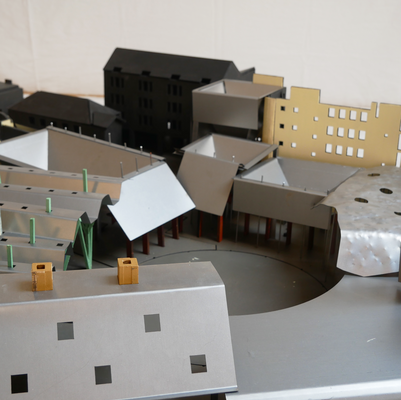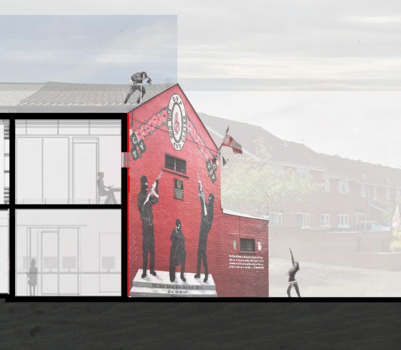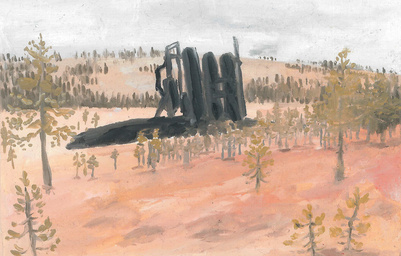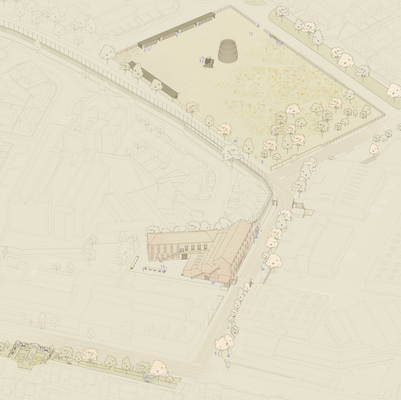The squatter movement has had an underestimated impact on the shaping of urban space in Copenhagen. This proposal explores the spacial practice of the squatter movement in public space, and how the spatial legacy represented by these practices can be a lasting spatial dialogue through new intervention with today's city in the kløvermarken.
An architectural ethnography was carried out on Den Sorte Firkant (the Black Square ) with a fridge (2020-now), Folkets Hus (squatted in 1971-now) and Byggeren (1973-demolished in 1980). Through the investigation, the concept of the space of appearance by Hannah Arendt emerged and allied with the squatted public space, which introduced the project into the spacial intervention phase.
Those interventions included different scales, the Urban “Squatting ”On Street Lights as the tactic of place-making. Charging stations, firewood stations, bee hotels, and street light swings, all adhere to the street light pole yet activate surroundings at the Small level. At the Middle Level, A Teahouse Squatted Under A Table is designed for a bigger congregation and a shelter, providing homeless, unvoiced youth with a platform. On the architectural level, A Commonalities' House Squatted On A Billboard is proposed with the need for public spaces of the squatter's community where individuals can come together to interact, express themselves, and engage in collective action for civic engagement and meaningful political discourse.
The project offers a new perspective by combining Hannah Arendt's concept of the space of appearance with urban history and encourages civic engagement and meaningful political discourse in public spaces.




























"Along a path known as 'the romance of the slums', the process of change ...... can easily be misinterpreted.
I don't think we should go back to the hard, old ways of living in cities, but rather try to show that in an age of affluence and prosperity, the emergence of new urban life erodes the diversity of cities and the possibility of complex living, which is the essence of urban life. In order to create new forms of complex, pluralistic experience, we need to make changes to the established order of wealthy urban life.“
- Richard Sennett《 The Uses of Disorder 》





































